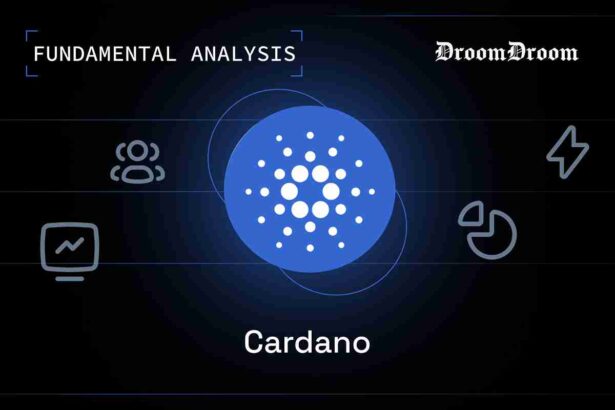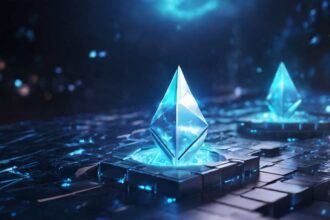Cardano alongside its native token, ADA, is regarded highly in the crypto space. Being one of the Ethereum killers, the project has attracted huge attention since its first day of existence. The connection of its founders to prominent projects in the industry has boosted its pedigree, establishing Cardano as one of the most sought-after crypto projects. In that regard, this piece will elucidate the position of Cardano through a microscopic view, bringing every detail about the project to your reach.
Cardano is a Layer-1 blockchain that seeks to establish itself as an alternative to Ethereum by advancing the cores of the latter to becoming a flexible, scalable, and sustainable network. Named after 16th-century Italian polymath, Gerolamo Cardano, the network is powered by the Ouroboros protocol. As one of the Ethereum killers, Cardano is in a tense competition with Solana, Avalanche, Polkadot, and Algorand.
Summary of Cardano’s Background
Cardano is a Layer-1 blockchain that focuses on building a decentralized and connected system. The blockchain consider itself to be an alternative to the Ethereum network by evolutionizing its cogent attribute to becoming a flexible, scalable, and sustainable platform. Majorly, the project provides support for smart contracts with the view of aiding developers to design a variety of Decentralized Finance Applications (DeFi), Games, and Tokens.
Founded in 2015 by Charles Hoskinson, the blockchain was named after 16th-century Italian polymath, Gerolamo Cardano. Popular 19th-century mathematician, Ada Lovelace who’s regarded as the first computer programmer inspired the name of the project’s native token; ADA. Cardano is built to be utilized for various use across many sectors. In the weirdest place of all, the Cardano blockchain has proven useful to entrepreneurs in the Agricultural sector.
More so, Cardano adopted the Proof-of-Stake consensus mechanism to be a more efficient option to Proof-of-Work blockchains. Cardano runs on the Ouroboros consensus protocol. Cardano’s PoS comes with the Ouroboros mechanism, an innovation birthed at the foundation phase of the project.
Mainly, Cardano adopted the Ouroboros protocol with the intention of limiting the power consumption of PoW-based blockchains. To achieve this goal, the project simplified the use of heavy computing resources by PoW blockchains. As it is, the pursuit has made the project a trailblazer, setting the path for other Ethereum Killers to follow.
The Ouroboros Protocol
Focusing on Cardano’s Ouroboros innovation, the initiative is the first provably secure PoS protocol. Worth mentioning, Cardano incorporated a special technology and mathematical verified system. This posture ensures that other projects and blockchains based on Cardano gain more secure and sustainable support.
Further, Infinity is a crucial element to the Ouroboros concept of Cardano. The concept ensures that global networks must be able to develop sustainably and ethically. However, it ensures that the development of these networks must not affect the climate conditions of the earth. Through Ouroboros, Cardano ensures the establishment and fruition of distributed, permissionless networks that can support emerging markets in a sustainable manner.
Worth mentioning that the ADA coin is the native token to the Cardano ecosystem. Mainly ADA is designed to maintain the decentralized dream of the project. Holders of Ada can participate in the operation of Cardank by giving them the voting privilege to vote or propose modifications to the project.
Team Members and Background
Charles Hoskinson one of the co-founders of Ethereum founded Cardano in 2015 before its initial release two years later. A dispute between Charles Hoskinson and another Ethereum co-founder, Vitalik Buterin led to the departure of Hokinson from Ethereum. Hoskinson left the project in 2014 alongside Jeremy Wood to establish Input Output Hong Kong (IOHK), the firm that designed the Cardano blockchain.
According to Findings, The Cardano founder attended the Metropolitan State University of Denver and the University of Colorado Boulder. As widely reported, the Cardano founder studied analytic number theory before diverting to cryptography. The diversion emanated as a result of the experience he amassed in the industry. However, there are reports that some of these claims are false.
However, before his journey to Ethereum, Charles Hoskison left a consulting position to work on the project “Ethereum Education Project.” The expert registered hope in BTC regarding how its limited supply made it a digital form of gold. While Jeremy Wood on the other end attended Indiana University-Purdue University Indianapolis. He began his journey in the crypto space in 2013 as one of the founding members of the Kansai Bitcoin Meet-up, before joining Ethereum the same year.
Tokenomics
Distribution:
Ada was launched in 2015 as the IOHK held five rounds of public sales for the coin between September 2015 to January 2017. Upon the launching of the network, the IOHK got 2.5 billion ADA as part of the token’s allocation. Accordingly, 2.1 billion went to Emurgo, an international blockchain firm that contributed to the development of the project.
Also, about 648 million ADA was allocated to the development, promotion, and adoption of the platform. These tokens were given to Cardano Foundation which is a non-profit organization for the project. In summary, 16% of the token went to the founding team of Cardano leaving 84% to investors.
Uses Cases:
The project regards itself as a third-generation protocol that aims to improve on Bitcoin (First Generation) and Ethereum (Second Generation). Insights into the project’s financial ecosystem indicate that it operates in two different layers with the base layer; Cardano Settlement Layer (CSL) allowing the exchange of ADA.
The CSL is designed to aid a virtual token economy with ADA representing its native valuable unit. Further, the second layer; the Cardano Computation Layer (CCL) accommodates the deployment of smart contracts and dApps. This layer enhances the capacity of the blockchain to embracing future upgrades.
As the native token of the Cardano ecosystem, ADA is basically designed to allow holders to participate in the running of the network. With that, those who hold the token can vote on upgrades and changes to the network.
Also, staking the token is another use case of ADA on the network. Through their holding, holders of ADA have a stake in the project which is proportional to the value of the token held. Staking ADA can come in two dimensions and they both have rewards. A holder can run their own stake pool or delegate their stake to a pool run by another person. However, the market metrics of ADA have attracted more attention of late, click here to know more about the token’s market performance.
Competition
- Solana: Solana stratified its focus on DeFi solutions as it is basically designed to support their creation. Its hybrid consensus mechanism consists of a combination of Proof-of-History and Proof-of-Stake to improve the scalability of blockchain. With the combination, the network has been able to effectively reduce validation times for transactions and smart contract execution. Like many of its peers in this category, Solana is structured to guarantee speed and scalability while charging low transaction fees.
- Avalanche: Avalanche also focuses on decentralized solutions and custom blockchain networks. The network provides a good structure for smart contracts alongside swift processing of transactions and scalability. Through its Exchange Chain, Contract Chain, and Platform Chain the network aims to solve the trilemma of blockchain most especially Ethereum. Dividing the network’s labor among these chains helps Avalanche to provide higher throughput.
- Polkadot: Polkadot focuses on full decentralization as it’s designed to be a bedrock for Web3 projects. The blockchain is an open-source sharded multichain protocol that bridges and protects a network of specialized blockchains. With these designs, Polkadot is capable of carrying out a cross-chain transfer of data and virtual assets. Worth mentioning that the blockchain does not focus on tokens alone, simply, it is effective in making blockchains interoperable.
- Ethereum: Most blockchain solutions in this category are aiming to dislodge Ethereum or serve as a strong alternative to it. Thus, earning the nick of being Ethereum killers. Ethereum is a decentralized open-source network that initiated the idea of blockchain smart contracts. These smart contracts are engineered to minimize the reliance on intermediaries with the aim of reducing transaction costs and enhancing transaction reliability.
- Algorand: Many consider Algorand to be a strong alternative to Cardano due to its speed and security. The blockchain prioritizes the swift processing of transactions. Algorand consensus algorithm facilitates swift confirmation of transactions in a few seconds. Another factor why many consider Algorand to be an alternative to Cardano is its flexibility. The network is efficient in issuing Fungible and Non-Fungible tokens and stablecoins, while charging low fees on transactions.
Future of ADA
In the past, we’ve seen the native token of the Cardano reacts to some network upgrades. To date, the token’s rally which came in response to the launch of the hard-fork Alonzo in early September 2021 remains its all-time high. To a reasonable extent, the future is bright for the token considering its Roadmap and other features the team behind the project intends to add consequently. With these features, ADA is likely to gain more market relevance.
Improvement proposals – builders suggest improvements or solutions & help shape the network’s future
Valuable participation – ada delegators help secure the network & can earn rewards for it
— Cardano Foundation (@Cardano_CF) April 4, 2023The future of the token and its present lead above these listed rivals is as well subjected to the performance of Cardano in the DeFi space. Ethereum killers like Solana and Polkadot are doing better than Cardano in that aspect. However, the gap is likely to wind down with more collaborative effort and system upgrades to the Cardano ecosystem. The DeFi space is growing rapidly and it has established itself as a prominent sector of the crypto sphere, read this article to learn more about the basis of this fast-growing innovation.
Drawbacks and Weaknesses
So far, the development of the Cardano ecosystem hasn’t been rapid as expected. This slow development hasn’t helped the position of the project amidst its peers despite going through a series of reviews and tests. This snail-pace growth has limited the project to have a little DeFi and NFT ecosystem.
Also, there are arguments that the blockchain is way behind in attaining a confidence-sparkling level of decentralization unlike some of its peers. Cardano’s programming language hasn’t helped the situation either and its lack of EVM compatibility has been a stumbling block to its growth. More so, there have been different instances where issues with synchronizations between ledgers had surfaced.
Our Takeaway
Cardano is way behind in its role of fulfilling the tag of being an Ethereum killer. The slow development of the project hasn’t aided it in fulfilling this role. Nevertheless, Cardano should still take credit for being one of the biggest Ethereum killers considering its position against close rivals. The native token of the project is significantly low in value compared to some of its listed rivals, and ADA’s overall market performance has positioned it as a considerable option for investors.
As it is, investors can acquire the coin at its present rate; which is relatively cheap, with the preference of keeping it for a while and watching it acquire more value in the nearest future. While this strategy may sound good to many, investors must as well consider that the token has shown a high degree of volatility in the past. Therefore, investors must carry out market research of their own to gather enough pointers before making any investment decision.
Lastly, the project looks good due to the pedigree of its developers and their consistent effort of improving the network. The team behind Cardano must fast-track the development of its ecosystem to place the project of other rivals.




















